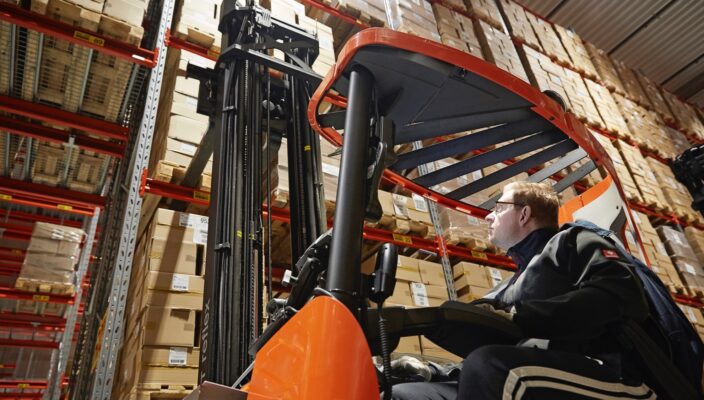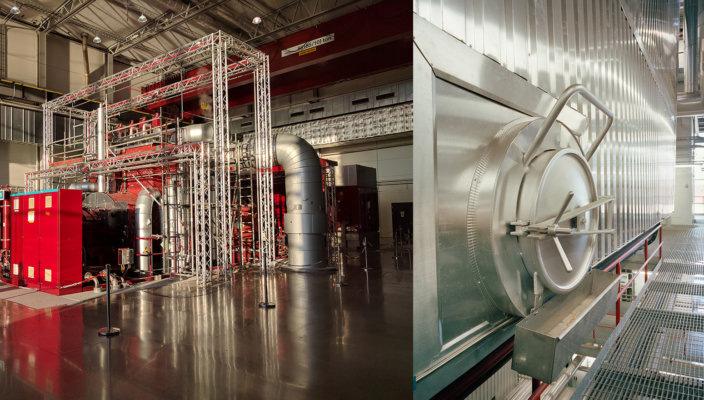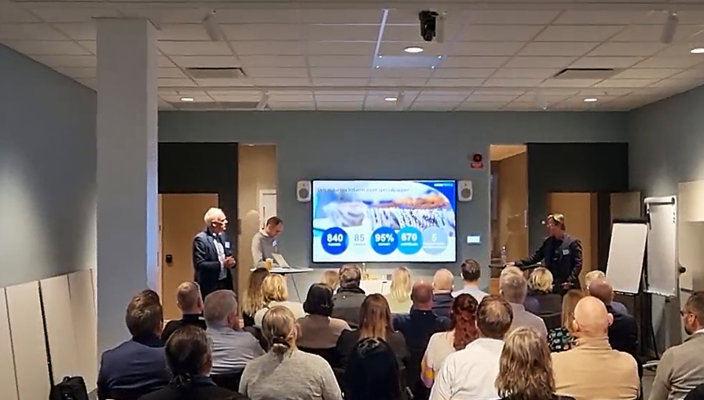
Electricity can be a dangerous business—and not just because of high voltage.
Many electricity companies are working with a combination of inhouse solutions and single-purpose tools, none of which talk to each other. This can lead to a host of issues: duplicate work, manual data entry, and worst of all: inadequate or inaccurate data.
But using Novacura Flow, Jämtkraft created a series of custom workflows that helped them reduce administrative time, collect better data, and boost productivity in many departments of their business.
Challenges
- Pen and paper work orders
- Systems not talking to each other
- Slow administration and data entry
Since 1889, Jämtkraft has been producing and distributing electricity in the north of Sweden. Their grid encompasses many different types of renewable energy, from hydroelectricity to wind power, bioenergy, and solar power.
In 2017, Jämtkraft was searching for ways to streamline work orders within the power grid operation. But there aren’t many process applications built especially for our type of business , says Patrik Forslund, Systems Manager at Jämtkraft:

Before they could just do work orders: now they can do work orders and inventory, and report into multiple systems at the same time.
In addition, Jämtkraft technicians managed their work orders the old-fashioned way: with pen and paper.
They had a binder with all the documents telling them how the work should go. The filled out reports were mailed back to the office then entered into the system.
With this setup, it could take days—or even weeks—for information to get into the system, which could lead to delays in billing and administration. There was also a high risk of human error.
If you’re a technician repairing a fridge, it’s quite a simple work order flow. It’s not as intense in reporting and control as we have when we’re working with high-power electricity. We have many more regulations than a standard service technician has. So, we needed to be able to build our own process steps: what to report when and so on.
The knowledge of the work order status was in the heads of the technicians. They’d document things once they got back to the office. Before, it wasn’t always arranged, to and Jämtkraft personnel had no real control over the work orders and the state the work was in.
Solution
- Mobile work orders (online/offline)
- Real-time data collection
- System integration
Novacura began working with Jämtkraft at the beginning of 2017. Together, they created a roadmap of short-term and long-term projects to integrate Jämtkraft’s various business systems, improve productivity, and reduce administration time.
The first order of business was system integration. In 2017, Jämtkraft had approximately 329 employees—and close to 200 different applications. So before building integrated tools, Jämtkraft’s systems, needed within the power grid operation, had to be able to communicate with IFS/Novacura Flow.

The second item on the list was mobile work orders. Working with Novacura consultants, Jämtkraft created custom work order applications that allow technicians to record data on mobile devices, both online and offline. Through a mobile device, the technician can:
- access all the information associated with the work order, including contact information (phone and email)
- record their progress on every stage of the work order, and report their progress to the back office
- use barcode scanning capabilities to reduce manual data entry and improve data quality
- collect important information on-site, including photos and signatures
The reporting itself is easier to do if you fill out the reports while you’re working. The lead time is much shorter now. If you’re employing younger people, you have to give them new tools. They don’t accept working in an old-fashioned way. You need to show that you’re a company that works on developing your processes and systems.
Results
- Better data quality
- Shorter lead times
- Increased coordination
Novacura provide much more collaboration between departments. This was significant improvement for Jämtkraft as before everyone department used different systems. Employers had a lot of manual routines and inhouse solutions (SharePoint etc.), where information were shared, but reports needed to be generated manually. Now on, all internal data exchange is redirected from mobile devices to the data servers. Implementation Novacura systems takes less than 6 months.
After the initial launch of the mobile work order flows, Jämtkraft has put Novacura Flow to use in many different departments. In addition to process-based apps for technicians and inspectors, they’ve made applications to help with distribution, maintenance, purchasing, warehouse management, and equipment handling.
While we haven’t measured the results officially, I can say that Novacura Flow has likely saved us a lot of time and money. Working with Novacura has been an eye-opener for us. (...)
For example: at the beginning of the Flow project, a technician could report their work orders through the Flow app. But now, when they’re in the work order, they can also issue materials, do returns on materials, and a whole lot more.
Users in Jämtkraft could connect to the work orders that have demand on materials and equipment into IFS and Flow. Before wasn’t possible to integrate their work all over processes but now they can do work orders and inventory, and report into multiple systems at the same time. The result is that Jämtkraft can manage their business processes—and their data—exactly how they want to.












